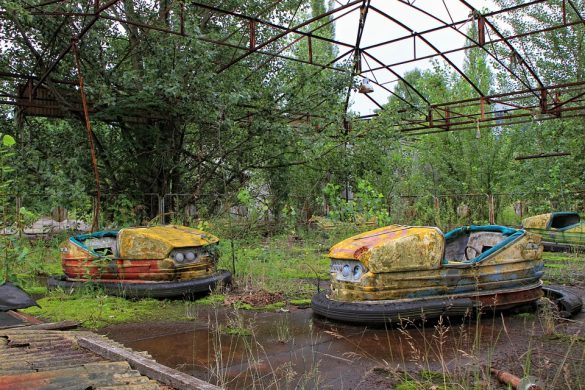More than 30 years after the Chernobyl nuclear disaster hit Ukraine and the entire site was left abandoned, solar energy farms are now offering a way to create value and supply clean electricity to the region.
Solar Chernobyl – a venture developed by Ukrainian engineering firm Rodina Energy Group and German renewable energy company Enerparc, has almost completed the first solar project to be commissioned in the area.
The 1 megawatt (MW) plant will have the ability to meet the electricity needs of a medium-sized village, or the equivalent of almost 2,000 homes.
Approximately 3,800 photovoltaic panels have been installed across 1.6 hectares- approximately the size of two football fields.
The project was plausible after a giant metal dome sealing the remains of the nuclear accident was installed a year ago. The domes act as isolators of the radiation- which after the installation decreased to one-tenth of previous levels.
The particular project has cost about $1.5 million, and it is estimated to yield a return on investment in 7 years after it gets connected to the grid within the following weeks.
Drilling and digging is still strictly prohibited, therefore the solar panels are fixed to concrete slabs and not to the ground.
Area evacuated
After the appalling disaster of 1986, when a reactor failure led to the largest nuclear accident in history, the area was evacuated and hasn’t been used ever since.
However, in July 2016, the Ukrainian government announced a plan to revitalise the 1,000 miles around the site of the nuclear meltdown.
As it is estimated that people cannot reoccupy the area for another 24,000 years and agriculture is obviously not an option, national authorities decided to offer the land to renewable energy developers.
To incentivise investors, the government offers a very competitive price for the land and significantly attractive Feed-in Tariffs, which according to energy associations are at least 50 percent higher than the average prices in Europe at the moment.
Another advantage of the area is that it has good transmission infrastructure because the former nuclear station which was decommissioned in 2000.
Local authorities are currently reviewing 60 proposals from solar energy developers. Companies which have expressed interest include the French Engie, which is conducting a pre-feasibility study for 1 MW, and the Chinese GCL System Integration and China National Complete Engineering.
Rodina and Enerparc are planning on completing at least another 100 MW in solar projects. Evgeny Variagin explained: “Bit by bit we want to optimize the Chernobyl zone. It shouldn’t be a black hole in the middle of Ukraine”















